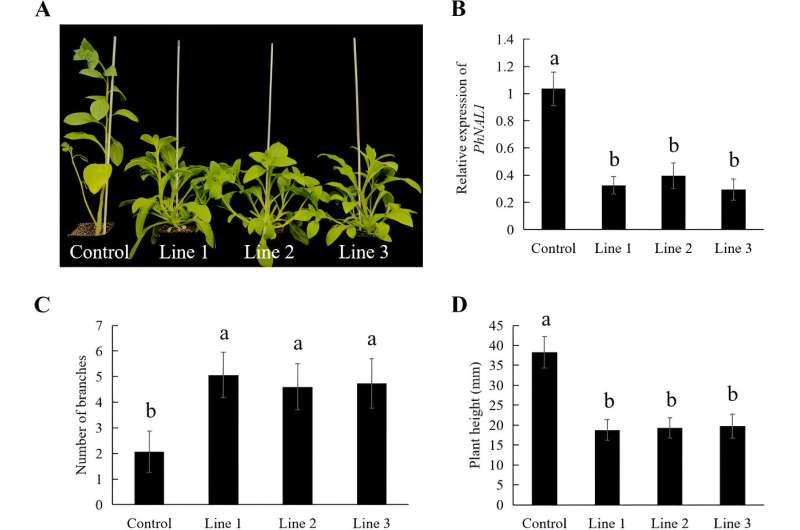Regulating branch development of petunias

Branching is a pivotal determinant of plant architecture, not only influencing the capacity of the plant to adapt to its environment but also significantly impacting crop yield, ornamental characteristics, and production economics of horticultural plants. Delving into the molecular regulation mechanisms governing shoot branching holds significant theoretical and practical importance.
Petunias, belonging to the Solanaceae family, are not only beloved in gardens but also serve as model organisms for studying plant development due to characteristics encompassing a well-defined genetic background, a brief growth cycle, and a well-established transformation system.
A study, in the journal J. Amer. Soc. Hort. Sci., explores the genetic factors influencing the branching patterns of petunia plants, with a specific focus on the PhNAL1 gene. The discovery of PhNAL1's involvement in branch development not only deepens the understanding of petunia biology but also has broader implications for the field of plant genetics and horticulture.
This development brings scientists another step closer to deciphering the genetic code that dictates the form and structure of petunia plants. Understanding the role of PhNAL1 in branch development opens up new possibilities for targeted breeding and genetic engineering, allowing for the subsequent development of new cultivars of petunia endowed with distinct branching characteristics.
More information: Ziying Jiang et al, PhNAL1 Is Involved in Regulating Branch Development of Petunia, J. Amer. Soc. Hort. Sci. (2023).
Provided by American Society for Horticultural Science


















